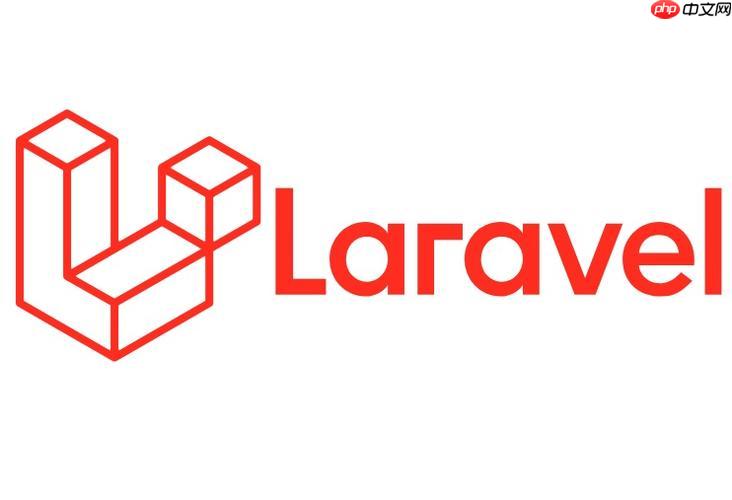在laravel中配置视图组件的方法包括:1. 创建组件类并定义数据和渲染逻辑;2. 创建对应的blade视图文件;3. 在appserviceprovider中注册组件(laravel 8及以上);4. 在模板中使用组件标签调用。组件可通过构造函数或属性传递数据,支持嵌套使用,并借助自动发现机制实现命名空间下的组件管理。

在Laravel中配置视图组件,其实就是让你的视图更加模块化、可复用。你可以把它想象成乐高积木,不同的组件可以拼装成不同的页面,大大提高了开发效率和可维护性。
解决方案
创建组件类: 首先,你需要创建一个PHP类来定义你的组件。这个类通常会包含组件的数据和渲染逻辑。比如,我们创建一个Alert组件:
namespace App\View\Components;
use Illuminate\View\Component;
class Alert extends Component
{
public $message;
public $type;
public function __construct($message, $type = 'info')
{
$this->message = $message;
$this->type = $type;
}
public function render()
{
return view('components.alert');
}
}这里,$message是组件显示的消息,$type是告警类型(info, warning, error等等)。构造函数接收这些参数,并将其赋值给类的属性。render()方法指定了组件使用的视图文件。
创建视图文件: 接下来,创建对应的视图文件,resources/views/components/alert.blade.php:
<div class="alert alert-{{ $type }}" role="alert">
{{ $message }}
</div>这个视图文件使用了Blade模板语法,可以访问组件类中的属性。
注册组件: 在config/app.php文件的aliases数组中注册组件(Laravel 7及更早版本):
'aliases' => [
// ...
'Alert' => App\View\Components\Alert::class,
],或者,使用boot方法在AppServiceProvider中注册(Laravel 8及更高版本):
use Illuminate\Support\Facades\Blade;
public function boot()
{
Blade::component('alert', App\View\Components\Alert::class);
}这种方式更推荐,因为它允许你使用短标签来引用组件。
使用组件: 现在,你可以在Blade模板中使用组件了。使用别名(Laravel 7及更早版本):
<Alert message="This is a success message!" type="success"></Alert>
或者,使用短标签(Laravel 8及更高版本):
<x-alert message="This is a success message!" type="success" />
注意,短标签会自动将组件类名转换为 kebab-case 形式。
Laravel视图组件如何传递数据?
传递数据的方式主要有两种:通过构造函数和通过属性。

云模块_YunMOK网站管理系统采用PHP+MYSQL为编程语言,搭载自主研发的模块化引擎驱动技术,实现可视化拖拽无技术创建并管理网站!如你所想,无限可能,支持创建任何网站:企业、商城、O2O、门户、论坛、人才等一块儿搞定!永久免费授权,包括商业用途; 默认内置三套免费模板。PC网站+手机网站+适配微信+文章管理+产品管理+SEO优化+组件扩展+NEW Login界面.....目测已经遥遥领先..
 0
0

构造函数: 正如上面的例子,构造函数是最常用的方式。你可以在构造函数中定义组件需要接收的参数,并在实例化组件时传递这些参数。
属性: 你也可以直接在组件的Blade模板中访问未在构造函数中定义的属性。Laravel会将所有未定义的属性传递给组件类,你可以在render()方法中访问它们。例如:
// 组件类 (App\View\Components\Button.php)
namespace App\View\Components;
use Illuminate\View\Component;
class Button extends Component
{
public function render()
{
return view('components.button');
}
}
// 视图文件 (resources/views/components/button.blade.php)
<button class="{{ $attributes['class'] ?? 'btn-primary' }}" {{ $attributes }}>
{{ $slot }}
</button>
// 使用
<x-button class="btn-secondary">Click Me</x-button>在这个例子中,class属性没有在构造函数中定义,但是可以直接在视图文件中通过$attributes['class']访问。{{ $slot }} 用于渲染组件标签之间的内容(例如 “Click Me”)。
如何实现视图组件的嵌套?
视图组件的嵌套非常简单,就像嵌套普通的HTML标签一样。你只需要在一个组件的视图文件中使用另一个组件即可。
例如,假设你有一个Card组件和一个Button组件。你可以在Card组件的视图文件中使用Button组件:
// Card 组件 (App\View\Components\Card.php)
namespace App\View\Components;
use Illuminate\View\Component;
class Card extends Component
{
public $title;
public function __construct($title)
{
$this->title = $title;
}
public function render()
{
return view('components.card');
}
}
// Card 组件视图 (resources/views/components/card.blade.php)
<div class="card">
<div class="card-header">{{ $title }}</div>
<div class="card-body">
{{ $slot }}
<x-button>Learn More</x-button>
</div>
</div>
// 使用
<x-card title="My Card">
This is the content of the card.
</x-card>在这个例子中,Card组件嵌套了Button组件。{{ $slot }} 用于渲染Card组件标签之间的内容。
视图组件的命名空间和自动发现机制?
Laravel 8 引入了组件自动发现机制,这意味着你不再需要在 AppServiceProvider 中手动注册组件。Laravel 会自动扫描 app/View/Components 目录下的所有类,并将它们注册为组件。
为了让自动发现机制正常工作,你需要遵循一些命名约定:
App\View\Components 命名空间下。MyComponent)。resources/views/components 目录下,并且文件名应该与组件类名相同,使用 kebab-case 命名法(例如 my-component.blade.php)。如果你想自定义组件的命名空间和目录,可以在 config/view.php 文件中进行配置:
'components' => [
'prefix' => 'app', // 组件前缀,默认为空
'namespaces' => [
'App\View\Components' => 'components', // 命名空间 => 视图目录
],
],在这个例子中,prefix 用于为所有组件添加一个前缀。namespaces 用于指定命名空间和视图目录的映射关系。例如,如果你的组件类位于 App\View\Components\Admin 命名空间下,并且视图文件位于 resources/views/admin/components 目录下,你可以这样配置:
'namespaces' => [
'App\View\Components\Admin' => 'admin.components',
],然后,你可以这样使用组件:
<x-admin.my-component />
以上就是如何在Laravel中配置视图组件的详细内容,更多请关注php中文网其它相关文章!

每个人都需要一台速度更快、更稳定的 PC。随着时间的推移,垃圾文件、旧注册表数据和不必要的后台进程会占用资源并降低性能。幸运的是,许多工具可以让 Windows 保持平稳运行。

Copyright 2014-2025 https://www.php.cn/ All Rights Reserved | php.cn | 湘ICP备2023035733号